This article has links to products that I may make commission from.
If you love growing tomatoes but don't have the space for a traditional garden, or if you want to try something new for your tomato plants, then tomato grow bags may be just what you need.
Tomato grow bags are a type of fabric pot made from a woven fabric that is heavy-duty, breathable, and specifically designed for growing tomatoes.
They offer several benefits over traditional planting methods and are ideal for those with limited space.
Here I’ll take you through advantages of using tomato grow bags, how to use them, and offer tips for growing healthy and productive tomato plants in grow bags.
To learn more about growing tomatoes, check out my guides:
When to Start Tomato Seeds Indoors
Are Coffee Grounds Good for Tomato Plants?
Quick Homemade Tomato Fertilizer
In this Article:
What are tomato grow bags?
How do tomato grow bags work?
What size grow bags are best for tomatoes?
The best tomato grow bags
The best soil for tomato grow bags
Can tomato grow bags be reused?
When to plant tomato grow bags
How to grow tomatoes in grow bags
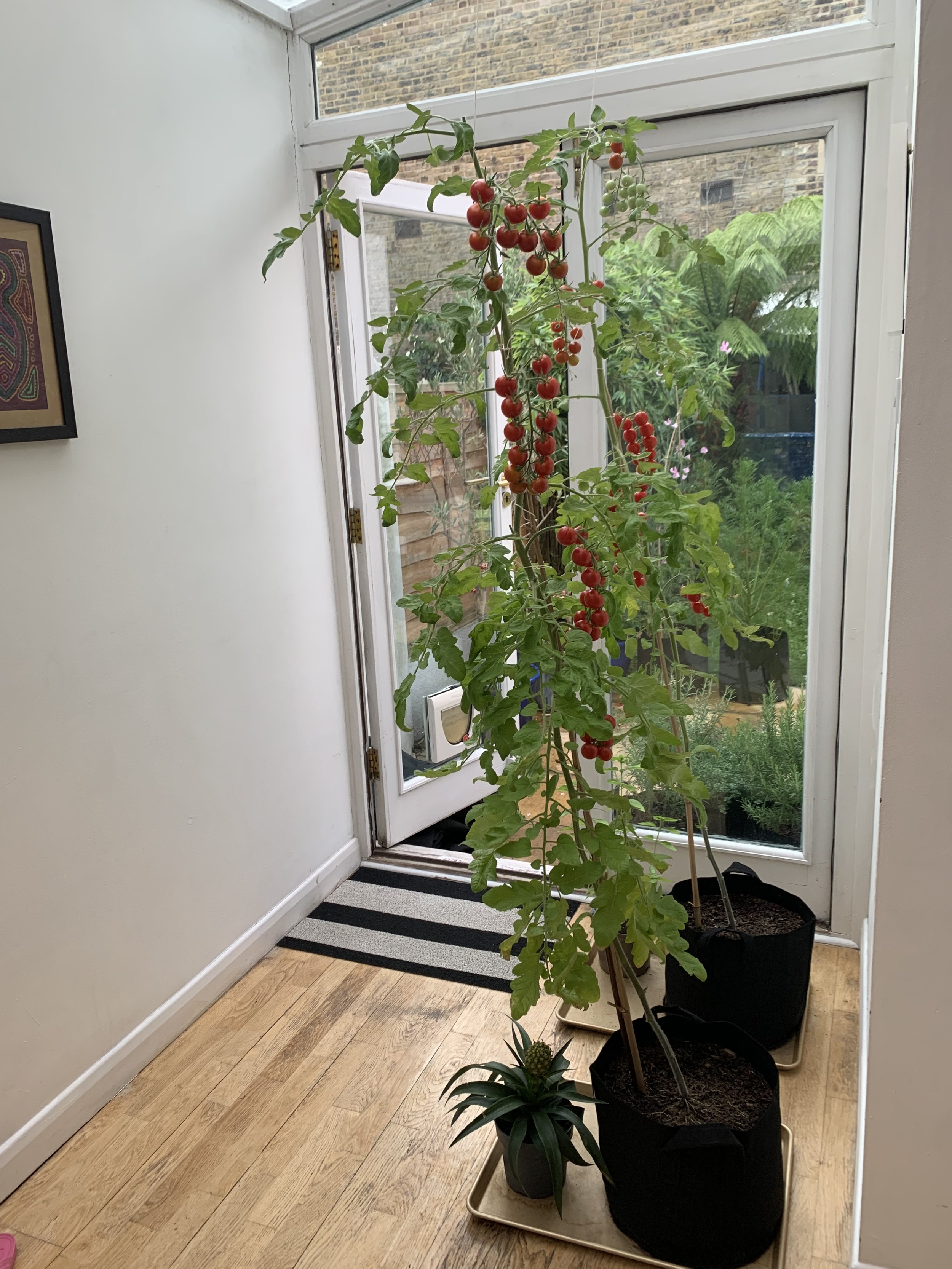
What Are Tomato Grow Bags?
Tomato grow bags are a type of container made from a woven fabric that is specifically designed for growing tomatoes.
These bags are made from heavy duty, breathable fabric that allows for excellent aeration and drainage, which is essential for healthy tomato plants.
Tomato grow bags come in a variety of sizes and shapes, and can be used in a variety of ways, including as standalone growing bags, in raised beds, or as planters on patios or balconies.
They are a popular choice for those who have limited space, as they can be used to grow tomatoes in a compact and efficient manner.
By using tomato bags, you can enjoy fresh, delicious tomatoes without the need for a traditional garden or raised bed.
How do Tomato Grow Bags Work?
Tomato grow bags work by providing a controlled environment for tomato plants to grow in.
The grow bags are typically made of a woven fabric material that allows for air circulation and drainage.
These fabric potspromotehealthier root systems and reduces the risk of overwatering, which can lead to root rot.
When you plant tomato plants in grow bags, you can control the type of potting mix or compost used, which allows for better drainage and aeration.
This, in turn, helps to prevent soil compaction and encourages stronger root growth.
The fabric material of the grow bag also helps to regulate the temperature of the soil, which is essential for optimal growth.
The fabric allows air to flow through, which helps to keep the soil cool during hot weather and prevents overheating, which can damage the roots.
Additionally, grow bags for tomatoesare portable and can be easily moved to different locations as needed.
This is particularly useful for gardeners who have limited space or who want to move their plants to a location with better sunlight or protection from the elements.
Overall, growing tomatoes in bags providesa convenient and controlled growing environment for tomato plants, allowing for healthier root systems and optimal growth conditions.
To learn more about growing tomatoes, check out my guides:
The Art of Harvesting Tomatoes: When and How to Pick the Perfect Fruit
Leggy Tomato Seedlings: Causes and Solutions
The Best Companion Plants for Tomatoes
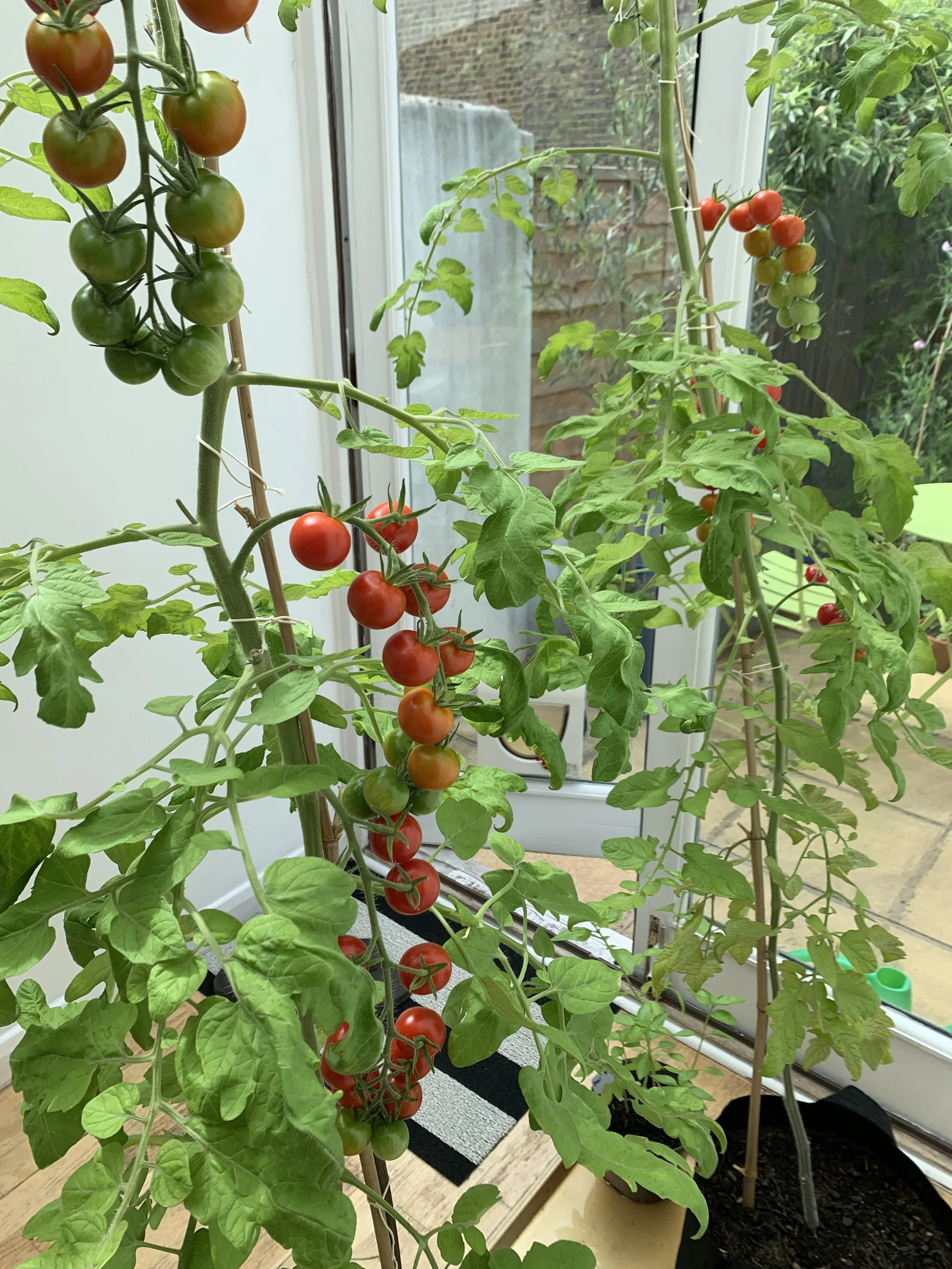
What Size Grow Bag for Tomatoes?
The size of the grow bag for tomatoes depends on the type of tomato plant, the size of the root system, and the space available for growing.
For determinate tomato plants, which grow to a certain height and then stop, a 5-gallon grow bag can be sufficient.
This size provides enough space for the roots to grow and supports the plant's size.
Determinate tomato plants are also well-suited for smaller spaces or patio gardens.
For indeterminate tomato plants, which continue to grow and produce fruit throughout the season, larger grow bags are recommended.
A 10-gallon grow bag is a good starting point for indeterminate tomato plants.
This size provides enough space for the roots to grow and allows the plant to support its size and fruit production.
If you have limited space or are growing tomatoes in a small area, you can still use smaller grow bags for indeterminate tomato plants, but you may need to stake or trellis the plants to support their growth and prevent them from toppling over.
All in all, the ideal size of the grow bag for tomatoes depends on the type of tomato plant, the size of the root system, and the available space for growing.
For determinate tomato plants, a 5-gallon grow bag can be sufficient, while indeterminate tomato plants may require a larger 10-gallon grow bag or larger.
To learn more about growing tomatoes, check out my guides:
Why is My Tomato Plant Not Flowering?
Growing Tomatoes in Shade: Top 6 Varieties
The Best Tomato Grow Bags
These grow bags are ideal for growing tomatoes.
They provide ample room for root growth and aeration, ensuring healthy plant development.
The fabric material promotes excellent drainage and air flow, minimizing the risk of overwatering and root rot.
The Best Soil for Tomatoes in Grow Bags
This compost is perfect for growing tomatoes in grow bags due to its organic certification, guaranteeing that it is made from all-natural, organic materials ideal for organic gardening and ensuring the healthiest growth environment for tomatoes.
The Best tomato Trellis
This tomato cage offers the best support for growing tomatoes in grow bags.
It reaches up to 68 inches, providing ample vertical space for tomato plants to climb, ensuring they get the best sunlight exposure and air circulation for healthy growth.
Its strong construction and easy-to-adjust features make it perfect for supporting the weight of growing tomatoes.
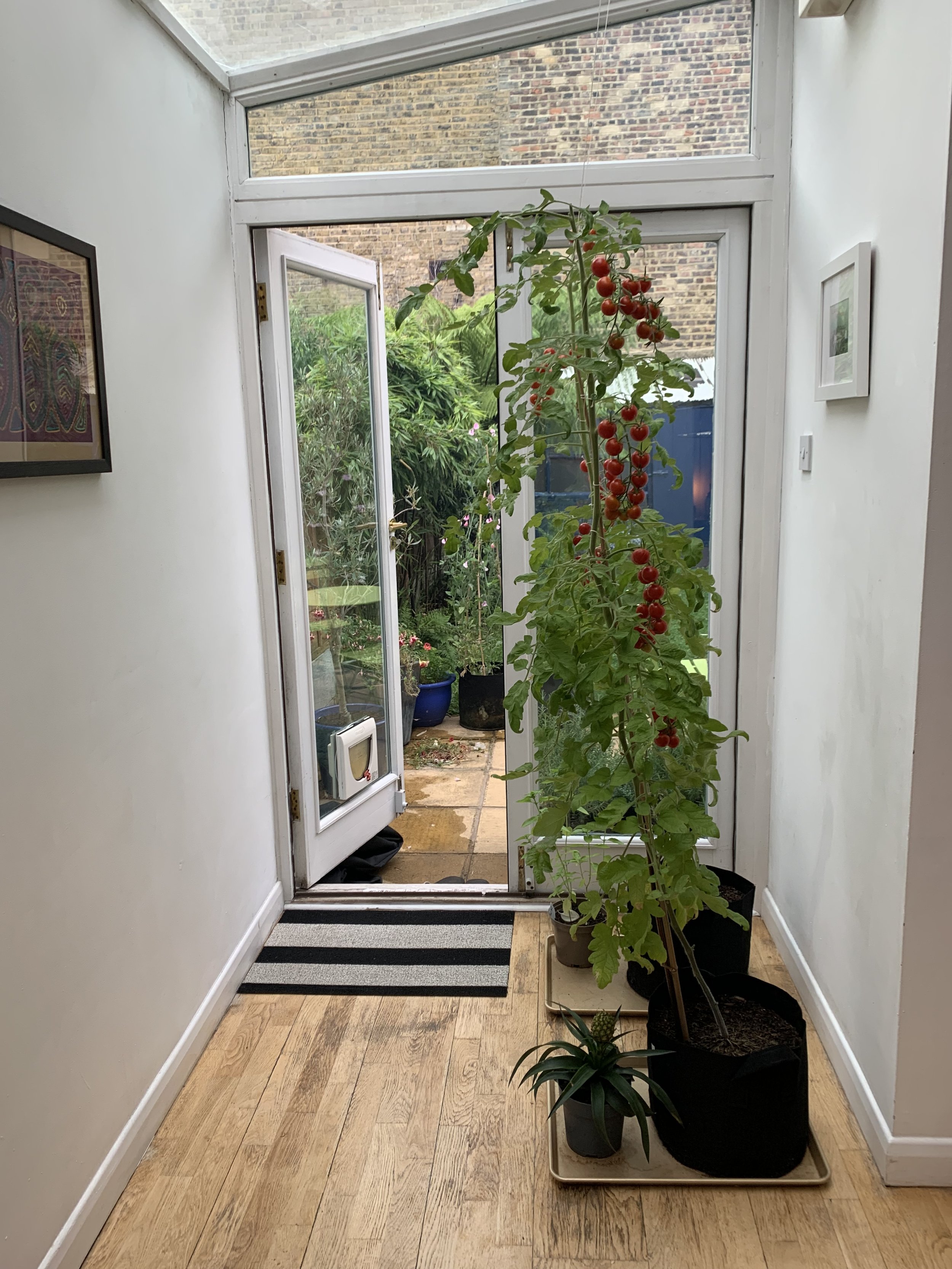
Can Tomato Grow Bags be Reused?
Yes, tomato grow bags can be reused for multiple growing seasons.
However, it is important to properly clean and disinfect the grow bags before using them again to prevent the buildup of disease pathogens and pests.
To clean and disinfect your tomato grow bags:
Start by removing all of the old pottingsoil and plant debris from the bag.
You can then wash the bag with soap and water, or use a mild bleach solution (1-part bleach to 9 parts water) to disinfect the bag.
After cleaning and disinfecting the grow bag, allow it to dry completely before storing it away.
Store the grow bags in a dry and cool location, away from direct sunlight.
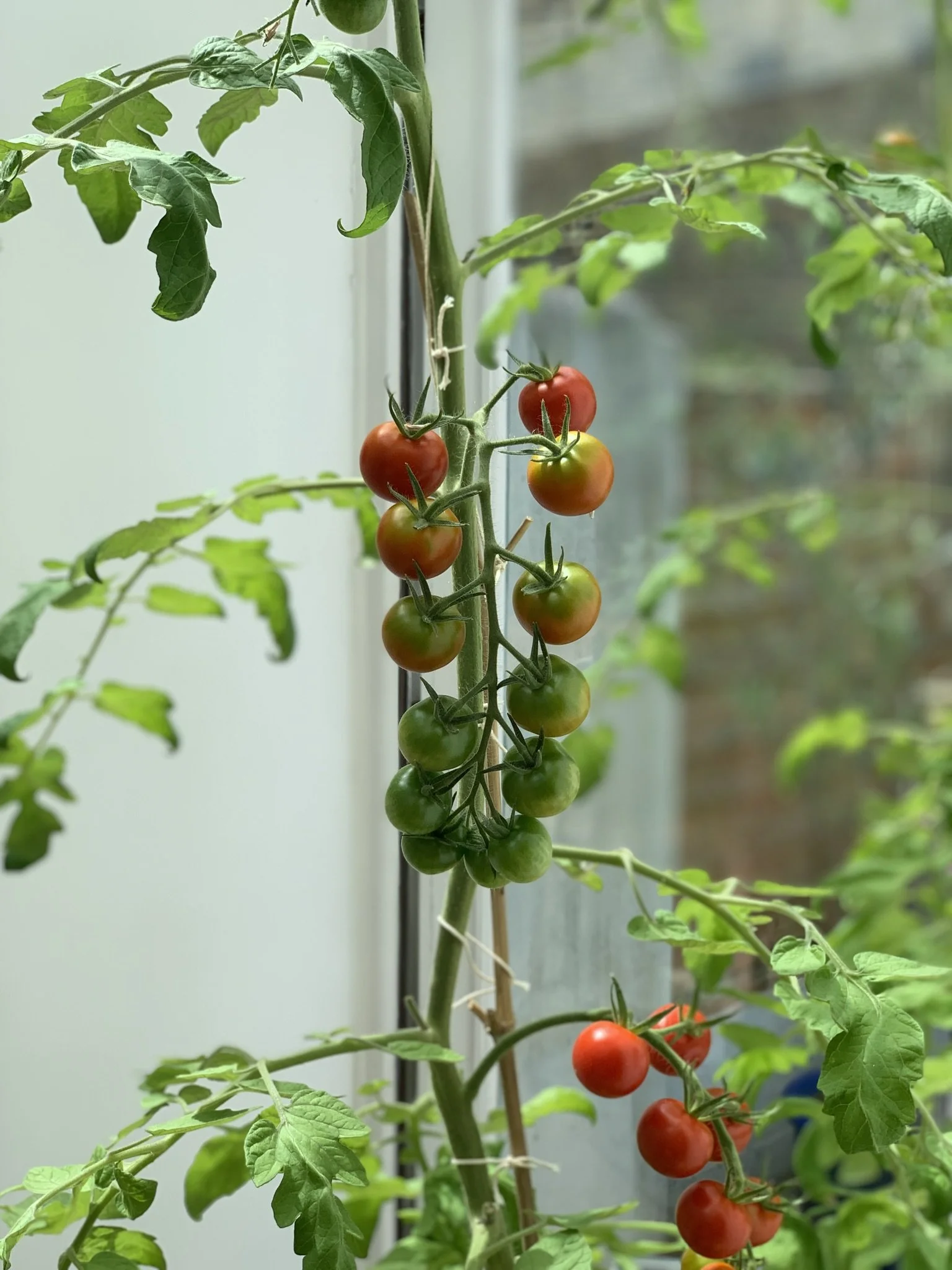
When to Plant Tomato Grow Bags?
The timing for planting tomatoes in grow bags depends on various factors, such as the climate in your area, the type of tomato plants you are growing, and the start of the growing season.
In general, tomato plants should be planted in grow bags after the last frost date in your area, when the soil has warmed up and the weather is consistently warm.
This is typically in late spring or early summer, but the exact timing can vary depending on your location.
If you are starting your tomato plants from seed, you should start them indoors several weeks before the last frost date to give them enough time to grow and develop before transplanting them into the grow bags.
Transplanting seedlings that are too small or immature can lead to poor growth and development. If you are struggling with leggy tomato seedlings, check out this guide to fixing them.
It is also important to choose the right variety of tomato plant for your climate and growing season. Some varieties are better suited for cooler temperatures, while others thrive in warmer conditions.
Additionally, determinate tomato plants, which grow to a certain height and then stop, may be better suited for smaller grow bags, while indeterminate tomato plants, which continue to grow and produce fruit throughout the season.
Growing indeterminate tomatoes in grow bagsmay require larger bags or more space.
Overall, the best time to plant tomato grow bags is after the last frost date in your area, when the soil has warmed up and the weather is consistently warm.
By choosing the right variety of tomato plant and ensuring proper timing, you can help ensure healthy growth and a bountiful harvest.
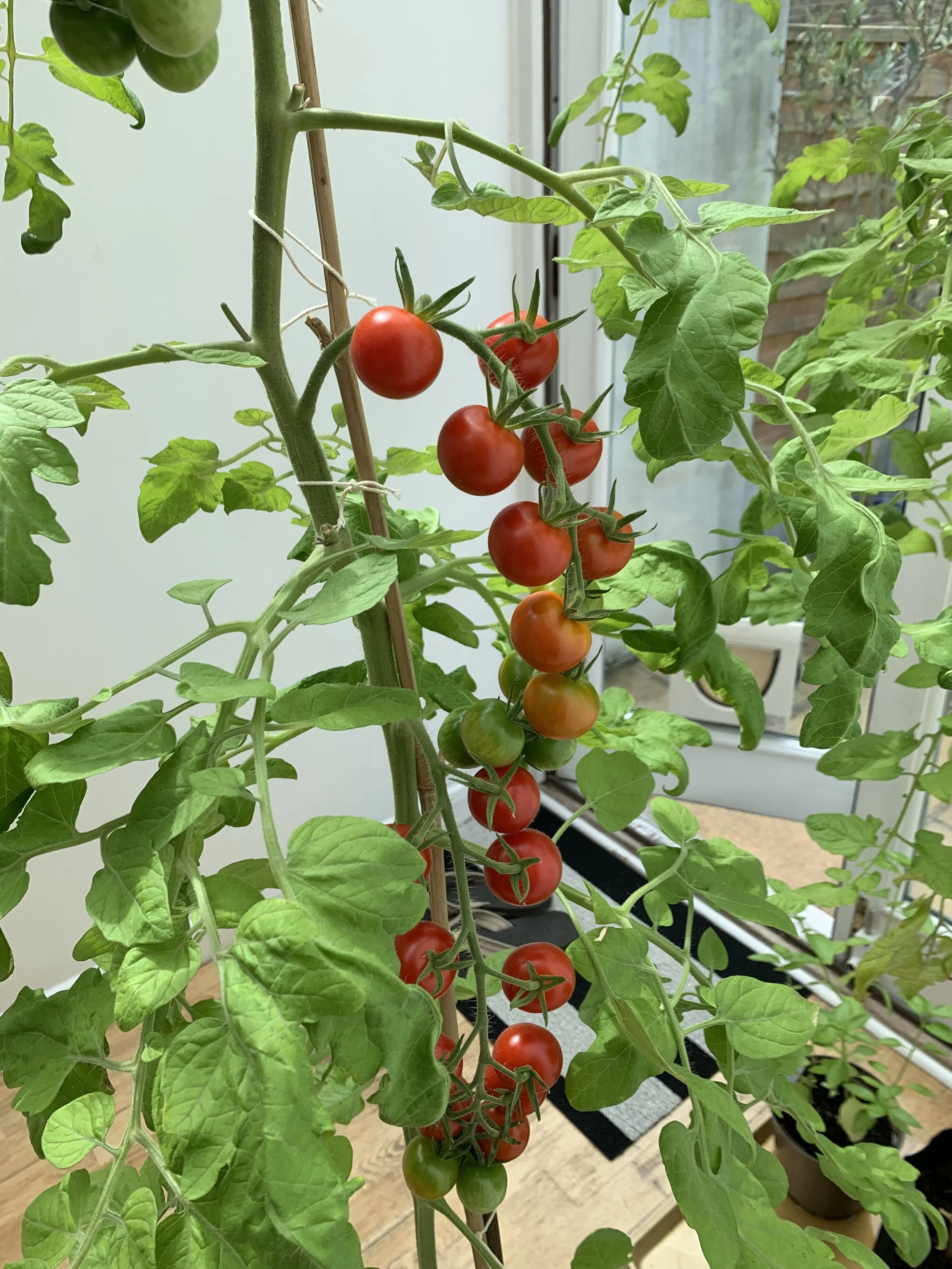
How to Grow Tomatoes in Grow Bags
Here's a step-by-step guide on how to use tomato grow bags:
Choosing the right size and material:
Consider the number of plants you want to grow:
Choose a grow bag size that will accommodate the number of tomato plants you want to grow.
A 5-gallon bag is suitable for one plant, while a 10-gallon bag can accommodate two plants.
Choose the right material:
Tomato grow bags are available in a variety of materials, including heavy-duty woven fabric and plastic.
Fabric bags are more breathable and provide better drainage, while plastic bags are more affordable and retain moisture well.
Choose a material that is best suited to your needs and growing conditions for this specific type of container gardening.
Filling the bag with potting mix or soil:
Fill the grow bag with high-quality compost:
Choose a quality organic compost is made from natural, non-synthetic materials and is free from synthetic fertilizers, herbicides, and pesticides.
Fill the bag to about 2-3 inches below the top:
This will provide enough space for watering and allow room for the soil to settle after planting.
Planting tomato plants in the grow bag:
Make a small hole in the center of the soil:
The hole should be large enough to accommodate the root ball of the tomato plant.
Gently remove the tomato plant from its container:
Be careful not to damage the root system.
Place the plant in the hole and fill in the soil around it:
Make sure the plant is firmly in place and the soil is packed down around the root ball.
Water the plant thoroughly:
This will help the soil settle around the root ball and establish good contact between the roots and the soil.
For this, you can use rainwater collected from a water butt.
Watering and fertilizing tomato plants in grow bags:
Water the plants regularly:
Tomato plants in grow bags require regular watering, especially during hot and dry weather.
Water until the excess water drains out of the bottom of the bag.
For more watering tips, check out my guide How to Use Watering Globes.
Fertilize the plants every two weeks:
Use a balanced fertilizer that contains equal amounts of nitrogen, phosphorus, and potassium. Here is my recommended fertilizer for tomatoes.
Or you can easily make your own homemade tomato fertilizer. Check out my guide: Quick Homemade Tomato Fertilizer.
Also, check out my guide Are Coffee Grounds Good for Tomato Plants?
Managing pests and diseases in grow bags:
Monitor the plants regularly for pests and diseases:
Check the plants daily for signs of insect damage or disease.
Remove affected leaves or plants:
If you notice any signs of disease or pest infestation, remove affected leaves or plants immediately to prevent the spread of the problem.
Use organic pest control methods:
Use organic pest control methods, such as neem oil or insecticidal soap, to control insect infestations.
In summary, growing tomatoes in a bag involves choosing the right size and material, filling the bag with potting mix or soil, planting the tomato plants, watering and fertilizing regularly, and monitoring for pests and diseases.
With proper care and attention, grow bag tomatoescan be healthy and productive, providing a bountiful harvest for the growing season.
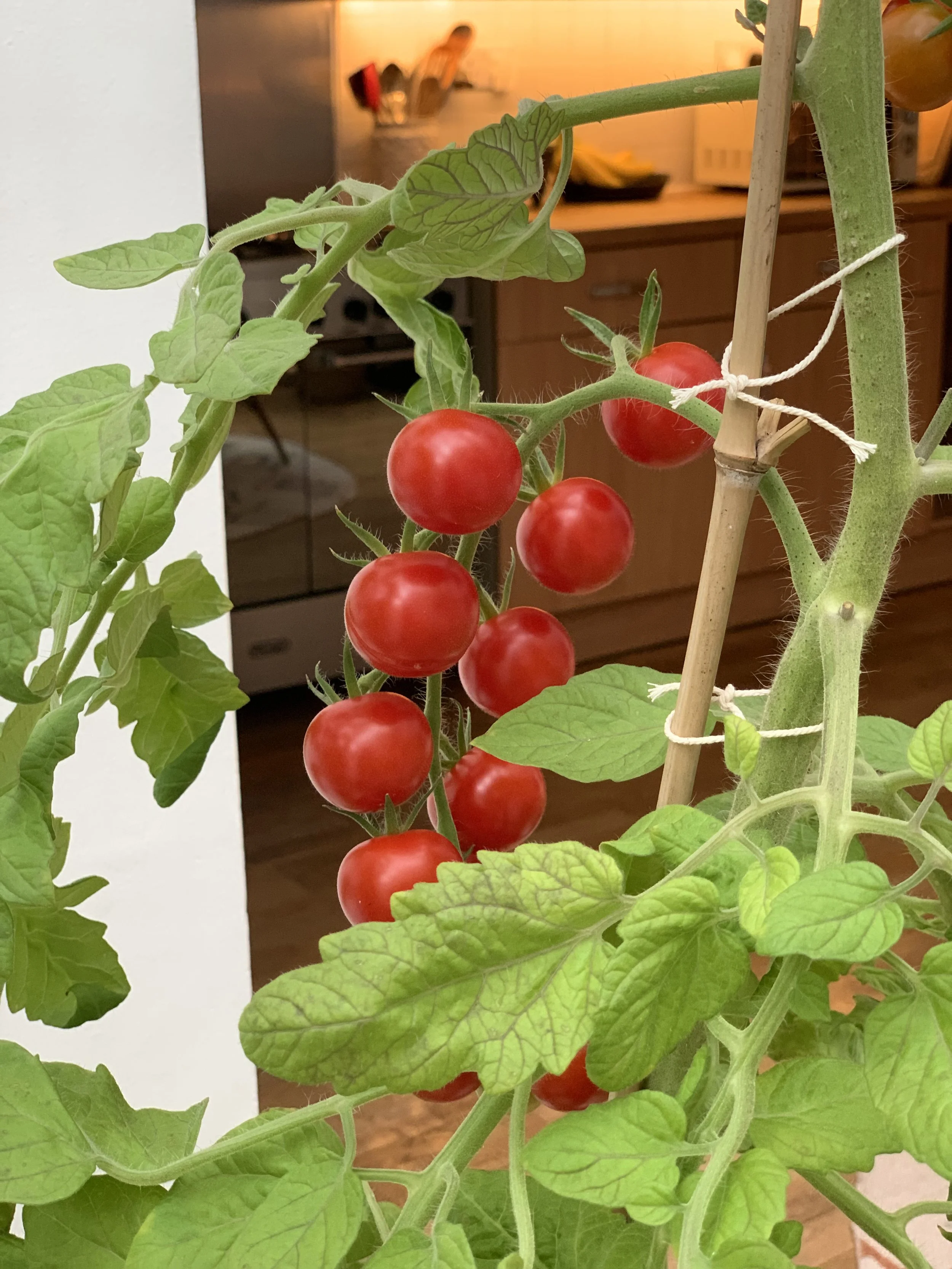
TIPS FOR GROWING TOMATOES IN GROW BAGS
Selecting the right tomato plant varieties for grow bags:
Choose a determinate or semi-determinate variety:
These tomato plant varieties tend to be more compact and bushy, making them well-suited for growing in containers.
Look for disease-resistant varieties:
Select tomato plant varieties that are resistant to common diseases like Fusarium wilt, Verticillium wilt, and Tomato mosaic virus.
Here are the tomato seeds I recommend:
Staking or supporting tomato plants in grow bags:
Use a stake or trellis:
Tomato plants in grow bags benefit from staking or trellising to keep the plants upright and support their heavy fruit.
Install the stake or trellis at planting time:
Insert the stake or trellis into the grow bag soil at planting time, being careful not to damage the root system.
Here is my recommended tomato trellis.
Pruning tomato plants in grow bags:
Remove suckers:
Tomato plants tend to produce suckers or side shoots that emerge from the crotch between the stem and a leaf.
Remove these suckers to focus the plant's energy on producing fruit.
Trim foliage:
Remove any lower leaves that touch the soil to prevent disease and promote air circulation.
Harvesting tomatoes from grow bags:
Check for ripeness:
Check the tomatoes regularly for ripeness by gently squeezing the fruit. Ripe tomatoes will yield slightly to the touch.
Harvest regularly:
Harvest tomatoes as they ripen to encourage the plant to produce more fruit.
Check out my full guide The Art of Harvesting Tomatoes: When and How to Pick the Perfect Fruit.

Can I Use Tomato Grow Bags for Flowers?
Yes, you can use tomato grow bags for growing flowers. While these bags are commonly used for growing tomatoes, they can also be used for growing other types of plants, including flowers, herbs, and vegetables.
The fabric material of the grow bags provides good aeration and drainage, which can benefit the root systems of a wide variety of plants.
When using grow bags for flowers, choose a potting mix appropriate for the specific type of flowers you wish to grow and make sure the grow bag is of an appropriate size for the mature size of the plant.
Additionally, be sure to provide proper support and regular watering and fertilizing as needed to help your flowers thrive.
For flowers that can thrive in grow bags, check out my guide How to Grow Zinnias in Pots: From Seed to Colorful Blooms.
How often should I water my tomato grow bags?
The frequency of watering your tomatoes in grow bags depends on several factors such as the size of the grow bag, the variety of tomato, the amount of sunlight and temperature, and the type of potting mix used.
However, as a general rule, tomato plants in grow bags need to be watered more frequently than those planted in the ground.
To determine if your tomato plants in grow bags need water, check the top inch of the soil mix.
If the soil feels dry, it is time to water. When watering, it is important to thoroughly saturate the soil and allow excess water to drain out of the grow bag.
This helps prevent waterlogged soil, which can lead to root rot and other problems.
In hot and dry weather conditions, tomato plants may need to be watered once or even twice a day.
On the other hand, in cooler or more humid conditions, watering every 2-3 days may be sufficient.
It is important to monitor your tomato plants closely and adjust your watering schedule as needed to ensure they receive the proper amount of moisture.
ADVANTAGES OF TOMATO GROW BAGS: AERATION AND DRAINAGE
The aeration and drainage benefits of tomato grow bags are one of the key advantages of using this type of container for growing tomatoes.
The woven fabric of tomato grow bags allows for excellent aeration, meaning that the soil in the bag can breathe and exchange gases with the atmosphere.
This is important because it helps to prevent soil compaction, which can lead to poor root development and plant growth.
Additionally, the porous nature of the fabric allows for excellent drainage, ensuring that excess water can drain away easily.
This is important because it helps to prevent waterlogging and root rot, which can be a problem in containers that do not have good drainage.
The combination of aeration and drainage benefits in tomato grow bags creates a healthy growing environment for tomato plants.
The roots have access to oxygen and nutrients, while excess water is able to drain away, creating a balance that promotes healthy root development and plant growth.
Overall, the aeration and drainage benefits of tomato grow bags make them an excellent choice for growing tomatoes, particularly in areas with heavy or poorly-drained soil.
ADVANTAGES OF TOMATO GROW BAGS:VERSATILITY
One of the advantages of growing bags for tomatoes is their versatility.
They come in a range of sizes, shapes, and materials, which makes them adaptable to a variety of growing spaces and conditions.
Size
Tomato grow bags are tomato planters that are available in a range of sizes, from small bags that can hold a single plant to large bags that can accommodate multiple plants.
This makes them ideal for those who have limited space or want to grow tomatoes in a compact and efficient manner.
Shape
Tomato grow bags come in different shapes, including round, square, and rectangular, making them adaptable to a range of growing spaces.
Some bags are tall and narrow, while others are short and wide, which allows for more flexibility in terms of placement and arrangement.
Material
Tomato grow bags are available in different materials, including heavy-duty woven fabric, which is durable and breathable, and plastic, which is lightweight and more affordable.
Some bags are also made from biodegradable materials, which makes them a more environmentally-friendly option.
Placement
Tomato grow bags can be used in a variety of settings, including balconies, patios, decks, or even indoors.
They can be placed on any level surface that receives sufficient sunlight and can be easily moved to follow the sun or to protect plants from inclement weather.
Use with other growing methods
Tomato grow bags can also be used in conjunction with other growing methods, such as raised beds, traditional gardens, or even hydroponics.
They can be used as standalone growing bags or as part of a larger system, which provides even more versatility.
In conclusion, tomato grow bags offer a fantastic solution for gardeners looking to grow tomatoes in small spaces or containers.
With their aeration and drainage benefits, versatility, and ease of use, fabric pots are becoming increasingly popular for container gardening.
By selecting the right tomato varieties, providing proper support, and regular watering and fertilizing, you can achieve a bountiful tomato harvest in your grow bags.
Looking for more container gardening inspiration? Check out my guides:
A Step-by-Step Guide to Growing Broccoli in Containers
Growing Pumpkins in Containers: A Complete Urban Garden Guide
The Ultimate Guide to Growing Carrots in Containers
Growing Lettuce in Containers: A Beginner's Guide
All Posts
Propagating Sage: A Simple Guide
Propagate Oregano: How to Multiply Your Herbs
Maximizing the Magic of Northwest Facing Gardens
Growing Mint from Cuttings: Easy Step-by-Step Guide
Problems Growing Radishes and How to Fix Them
Growing Beets in Containers Successfully
Easy Flowers to Grow from Seed
When to Harvest Swiss Chard
Problems Growing Rhubarb: Simple Fixes
How to Grow Marigolds from Seed
Growing Tomatoes in Shade: Top 6 Varieties
The Best Companion Plants for Dill
Powdery Mildew on Zucchini: The Best Natural Remedies
What is a Kitchen Garden?
Perlite vs Vermiculite: What's Best for Your Garden?
Deadheading Tulips: How to Do It Right
Growing Lavender from Seed: The Easiest Ways
The Best Gardening Books for Beginners
Companion Plants for Raspberries (And Which Ones to Avoid)
Deadheading Daffodils: How to Ensure Next Year’s Blooms
How Often to Water Seedlings
The Best Plants for Your South West Facing Garden
A Guide to Growing Perfect Greenhouse Cucumbers
The Best Seed Starting Mix
Why is My Tomato Plant Not Flowering?
Top Slug Resistant Plants to Transform Your Garden
The Best Companion Plantsfor Tomatoes
The Best Chive Companion Plants
The Easiest Ways to Keep Cilantro from Bolting
Garden, Garden Guides, Vegetable Garden
Laura Azcarraga
Comment



